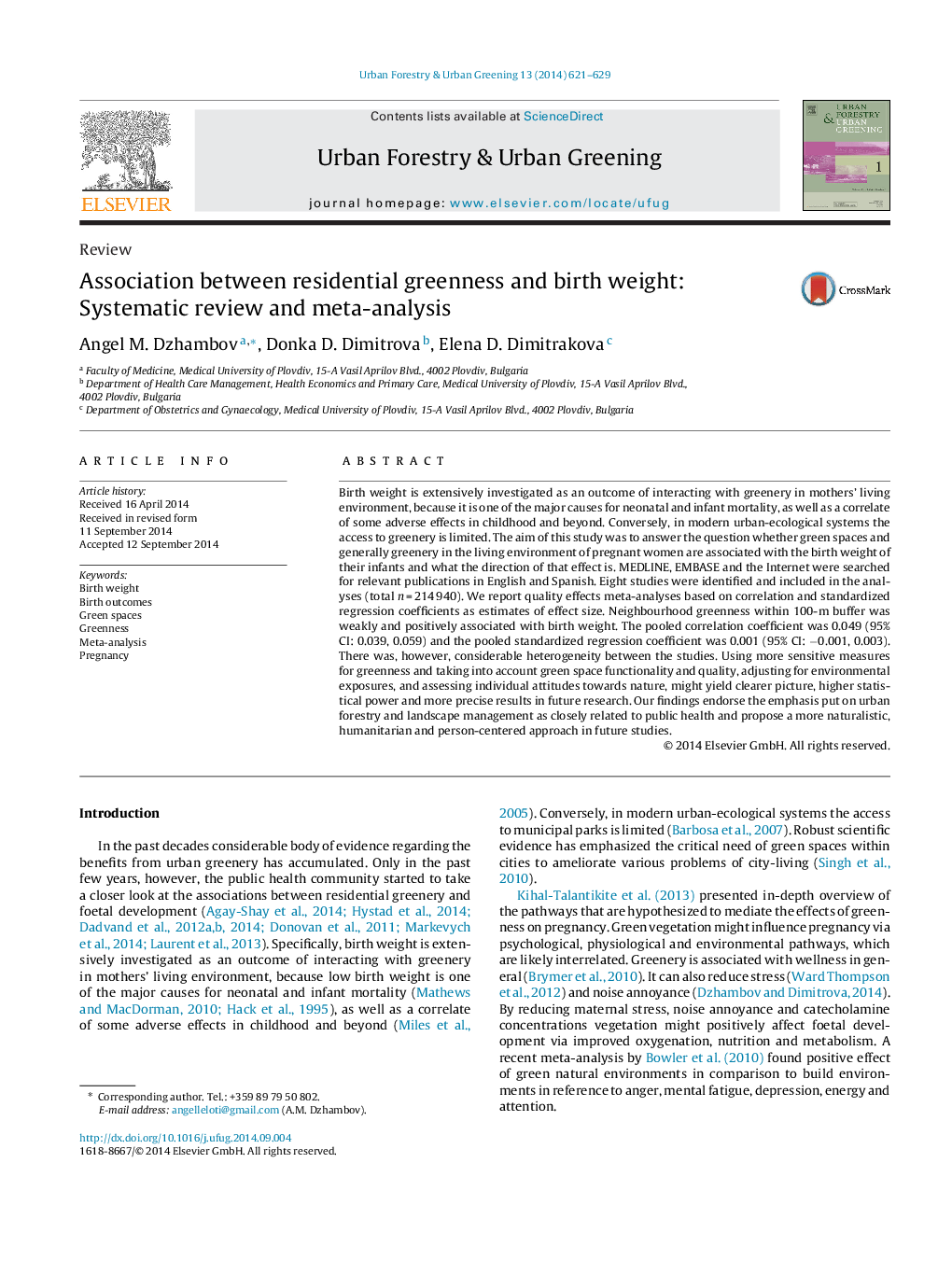| Article ID | Journal | Published Year | Pages | File Type |
|---|---|---|---|---|
| 10252161 | Urban Forestry & Urban Greening | 2014 | 9 Pages |
Abstract
Birth weight is extensively investigated as an outcome of interacting with greenery in mothers' living environment, because it is one of the major causes for neonatal and infant mortality, as well as a correlate of some adverse effects in childhood and beyond. Conversely, in modern urban-ecological systems the access to greenery is limited. The aim of this study was to answer the question whether green spaces and generally greenery in the living environment of pregnant women are associated with the birth weight of their infants and what the direction of that effect is. MEDLINE, EMBASE and the Internet were searched for relevant publications in English and Spanish. Eight studies were identified and included in the analyses (total n = 214 940). We report quality effects meta-analyses based on correlation and standardized regression coefficients as estimates of effect size. Neighbourhood greenness within 100-m buffer was weakly and positively associated with birth weight. The pooled correlation coefficient was 0.049 (95% CI: 0.039, 0.059) and the pooled standardized regression coefficient was 0.001 (95% CI: â0.001, 0.003). There was, however, considerable heterogeneity between the studies. Using more sensitive measures for greenness and taking into account green space functionality and quality, adjusting for environmental exposures, and assessing individual attitudes towards nature, might yield clearer picture, higher statistical power and more precise results in future research. Our findings endorse the emphasis put on urban forestry and landscape management as closely related to public health and propose a more naturalistic, humanitarian and person-centered approach in future studies.
Related Topics
Life Sciences
Agricultural and Biological Sciences
Forestry
Authors
Angel M. Dzhambov, Donka D. Dimitrova, Elena D. Dimitrakova,
